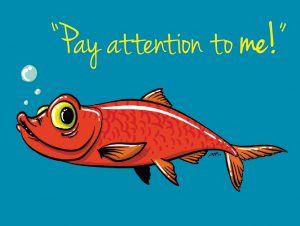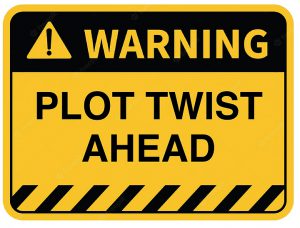Many years ago at my sister’s wedding, an adorable old woman asked me a simple, harmless question that I’ll never forget.
“Who are you again?” she asked, her eyes squinting just a bit as she tried to remember.
“I’m Michael,” I replied then swallowed the lump in my throat before adding: “Your son.”
My mom’s battle with Alzheimer’s was heart-wrenchingly sad. In that moment at the wedding, the first time she didn’t recognize me, her diagnosis became real in a way that’s hard to fathom, let alone describe. Hearing and answering that question was perhaps the most significant plot twist of my life.
A plot twist is, of course, an unexpected occurrence. I knew my mom would eventually, someday, not know who I was. But eventually. Someday. Not that day. Preparing for that moment was impossible.
As an author in the thriller genre, I know the plot twist plays the role of both partner and adversary in fiction. Twisting the plot is a necessity, and if done well, the surprise can define – make or break – your book. (Think Gone Girlor The Sixth Sense in movies.) However, if you give into the temptation without doing the accompanying, meticulous work, you risk creating a story let-down that readers will reject. We’ve all been there.
She stood frozen in disbelief. Could it really have all been a dream?
The End
I’m kidding with that example, but here’s a real one from a very popular novel and author (neither of which I’ll name out of respect). The chapters alternate perspective between two women. People in their group are being murdered one by one. The big plot twist at the end is that the killer is . . . one of the two women!
Um . . . no.
I’ve been in this character’s head for half the book, and she never once thought about the murders she’s been committing or about her plan for the next one? That’s nonsense. That’s the author withholding (i.e. manipulating) the narrative. Back in the day, that was an absolute no-no, breaking one of the fundamental rules of storytelling. Today? It’s just an easy (i.e. lazy) way to do plot twists that countless readers don’t seem to care about. These books get gushing, five-star reviews that they don’t deserve. It’s astounding to me. There, I said it.
And if you’re thinking it’s just an “unreliable narrator” issue, I’m sorry, but you’re confusing your terms. Narrator and point-of-view character are two distinctly different things. I swear. My recent novel has five point-of-view characters but only one narrator. They are not the same.
There’s a craft to setting up clues for a reader, especially false ones known in writing as red herrings. Although there is some debate, that term was allegedly coined in 1686 when a British gentlemen’s magazine suggested prolonging a fox hunt by using the strong-smelling fish on the trail to confuse the dogs.
In 1807, a British journalist criticized an erroneous report that Napoleon had been defeated. The article called the false news a political distraction and likened the report to the red herring tactic of the fox hunt. This piece of journalism is widely considered to be the start of the figurative life of the term “red herring.”
Sidenote: Red Herring is not an actual fish species. A once popular curing process intensifies a herring’s pungent smell and turns its skin red. Voila!
The purpose of the red herring in literature is to lure readers toward incorrect assumptions about a number things, from a character’s motivation to the truthfulness or relevance of some point in the plot. If you’re a fan of this kind of book, being shocked at the reveal is a big part of the enjoyment. And so is guessing correctly, figuring out the truth despite all the attempts to mislead you.
Famous literary examples of red herrings can be found in Agatha Christie’s works, particularly And Then There Were None, in which a character’s disappearance falsely tags him as the latest murder victim. The Prisoner of Azkabanintroduces Harry Potter fans to Sirius Black, a terrible villain seeking to kill the famous boy wizard. Or is he?
In Dan Brown’s The DaVinci Code (Quit lying. You did too read it.) the character you are led to think is the evil mastermind turns out to be no such thing. Fun fact: that character’s name is Manuel Aringarosa, which is Italian for “red herring.” (Literally “pink herring,” but close enough.)
Are there red herrings in real life? Sure! If you’ve ever been betrayed by someone you thought was a friend, the friendship was a red herring. Did you ever do something then discover the task’s incentive reward was disappointingly lame? However that incentive was pitched to you probably had some red herring qualities. When a politician replies to a question by expounding on an unrelated topic, that’s the red herring fallacy at work.
Plot twists, especially those in real life, don’t always involve red herrings, and they don’t have to be sad or tragic. Early in my wife’s pregnancy we were on an ultrasound visit. The nurse said everything looked great the casually commented: “And you know you’re having twins, right?” We, in fact, didn’t know until that moment, an amazing plot twist that started the most amazing journey of my life: fatherhood.
How we deal with life’s many plot twists depends a lot on our personalities and our outlook on life. The assumption might be that a more reserved person would experience fewer twists, but most of life happens to us, regardless of the whether the bull’s horns are in our grasp or not so much. Is the introvert more surprised or less prepared for a plot twist that the thrill-seeking adventurer? Who’s to say? I can’t imagine the data would lump personality types together like that. Identifying the twists in your own life and how you dealt with them can teach you a lot about yourself.
So let’s have it. What was the biggest plot twist in your life? How did you deal with it?
This post first appeared in December 2022 on michaelmullinauthor.com



